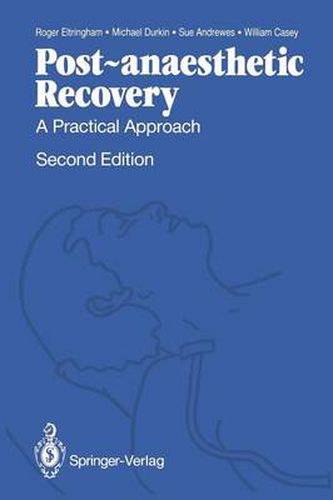Readings Newsletter
Become a Readings Member to make your shopping experience even easier.
Sign in or sign up for free!
You’re not far away from qualifying for FREE standard shipping within Australia
You’ve qualified for FREE standard shipping within Australia
The cart is loading…






This title is printed to order. This book may have been self-published. If so, we cannot guarantee the quality of the content. In the main most books will have gone through the editing process however some may not. We therefore suggest that you be aware of this before ordering this book. If in doubt check either the author or publisher’s details as we are unable to accept any returns unless they are faulty. Please contact us if you have any questions.
Developments in surgery have enabled more ambitious operations to be attempted than ever before, while similar advances in anaesthesia and monitoring have meant that many patients who were previously considered unfit now undergo surgery. It is essential that standards of patient care during surgery are continued post-operatively until the depressant effects of anaesthesia have worn off and it is safe for patients to return to the wards or to their homes. The importance of adequate supervision by well-trained nurs ing staff in properly equipped surroundings has been recognised by the introduction of recovery rooms in most hospitals. Despite this, many patients still emerge from anaesthesia in wards or departments where they are supervised by inexperienced nursing staff in unfamiliar surroundings. Recovery from anaesthesia may be accompanied by a variety of dangerous and potentially fatal complications, many of which can be avoided by the detection of early warning signs and the institution of appropriate therapy before an irreversible situation is allowed to develop. This book describes the major complications liable to be encountered and suggests how they may be avoided by careful monitoring, vigilant nursing and sound organisation. The patient’s behaviour at recovery is influenced by his pre-operative condition, by drug therapy pre- and intra-operatively and by the nature of the surgery, and sections have been devoted to these aspects since a basic understanding of them is essential in anticipating events in the recovery room.
$9.00 standard shipping within Australia
FREE standard shipping within Australia for orders over $100.00
Express & International shipping calculated at checkout
This title is printed to order. This book may have been self-published. If so, we cannot guarantee the quality of the content. In the main most books will have gone through the editing process however some may not. We therefore suggest that you be aware of this before ordering this book. If in doubt check either the author or publisher’s details as we are unable to accept any returns unless they are faulty. Please contact us if you have any questions.
Developments in surgery have enabled more ambitious operations to be attempted than ever before, while similar advances in anaesthesia and monitoring have meant that many patients who were previously considered unfit now undergo surgery. It is essential that standards of patient care during surgery are continued post-operatively until the depressant effects of anaesthesia have worn off and it is safe for patients to return to the wards or to their homes. The importance of adequate supervision by well-trained nurs ing staff in properly equipped surroundings has been recognised by the introduction of recovery rooms in most hospitals. Despite this, many patients still emerge from anaesthesia in wards or departments where they are supervised by inexperienced nursing staff in unfamiliar surroundings. Recovery from anaesthesia may be accompanied by a variety of dangerous and potentially fatal complications, many of which can be avoided by the detection of early warning signs and the institution of appropriate therapy before an irreversible situation is allowed to develop. This book describes the major complications liable to be encountered and suggests how they may be avoided by careful monitoring, vigilant nursing and sound organisation. The patient’s behaviour at recovery is influenced by his pre-operative condition, by drug therapy pre- and intra-operatively and by the nature of the surgery, and sections have been devoted to these aspects since a basic understanding of them is essential in anticipating events in the recovery room.